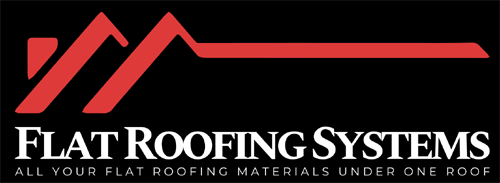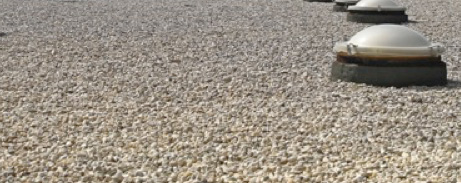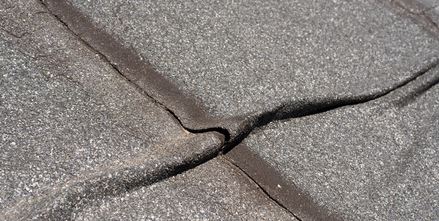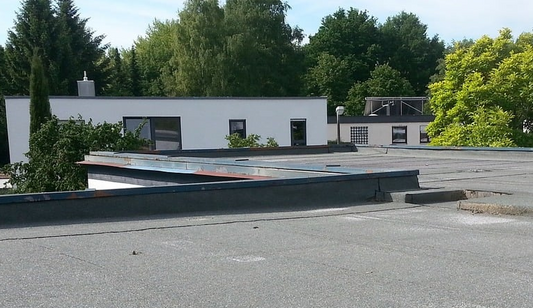Liquid waterproofing is a reliable solution for rescuing flat roofs from damage, offering a durable and long-lasting way to prevent costly repairs and extend the lifespan of a roof.
Suitable for various projects, including complex detailing, existing roof overlays, repairs, and localized damage, liquid waterproofing works well on all types of flat roofs, including warm, cold, and inverted roofs.
With its ease of application and self-terminating properties, it provides a cost-effective solution for roof maintenance and repairs.
By understanding the benefits and applications of liquid waterproofing, you can access a thorough solution for your flat roofing needs.
Key Points
Liquid waterproofing is a game-changer for complex roof detailing, existing roof overlays, repairs, and localized damage on flat roofs. This is because it can be easily applied to intricate areas, reducing the risk of leaks and making the process more efficient. For instance, cold liquid waterproofing solutions are compatible with over 7,000 substrates, ensuring a reliable and long-lasting seal. This versatility is crucial, as it allows for a wide range of applications, from warm, cold, and inverted roofs to various substrates.
One of the significant benefits of liquid waterproofing is its ability to quickly and easily seal roof penetrations, soil vents, and skylights. This is particularly important, as these areas are prone to water ingress, which can lead to costly repairs. By using liquid waterproofing, you can prevent water from entering the roof, reducing the risk of damage and extending the lifespan of the roof. Moreover, liquid waterproofing is suitable for all types of flat roofs, making it a versatile solution for various roofing needs.
In addition to its practical benefits, liquid waterproofing also simplifies complex detailing. This is achieved by creating a seamless, watertight seal that eliminates the need for multiple layers or complicated detailing. As a result, the risk of leaks is significantly reduced, and the application process becomes more efficient. Overall, liquid waterproofing is an effective solution for flat roof repairs, overlays, and new constructions, offering a reliable and long-lasting seal that can withstand various weather conditions.
When to Use Liquid Waterproofing
When to use liquid waterproofing on a roof is crucial for architects, builders, and property owners. Liquid waterproofing offers several benefits that can enhance the quality and efficiency of flat roofing projects.
It's suitable for various projects, including complex detailing, existing roof overlays, repairs, and localized damage. This system works well on all types of flat roofs, including warm, cold, and inverted roofs.
Its versatility and compatibility make it an ideal choice for a wide range of roofing applications.
Using liquid waterproofing can prevent costly repairs and extend the lifespan of a roof. It's essential to consider the specific needs of a project and the type of roof being worked on.
Liquid waterproofing is particularly useful for complex detailing, as it can be easily applied to intricate areas. It's also suitable for existing roof overlays, repairs, and localized damage, making it a versatile solution for various roofing needs.
In addition, liquid waterproofing offers excellent compatibility with various substrates, making it a reliable choice for architects, builders, and property owners.
Its ability to work well on different types of flat roofs, including warm, cold, and inverted roofs, makes it an ideal solution for a wide range of roofing applications. By using liquid waterproofing, individuals can ensure that their roofs are protected from water damage and can enjoy a longer lifespan.
Complex Detailing Made Easy
Complex detailing on flat roofs can be a challenging task due to the numerous roof penetrations that require sealing.
However, cold liquid applied waterproofing simplifies this process by eliminating the need for formers or termination bars. This is particularly beneficial for flat roofs with multiple penetrations, as it reduces the risk of leaks and makes the application process more efficient.
Liquid waterproofing can be quickly and easily applied to tricky penetrations such as soil vents, pipe pockets, cables, extraction ducting, skylights, and mounts.
Existing Roof Overlays Simplified
Refurbishment projects often face the challenge of dealing with existing waterproof membranes on flat roofs. However, with cold liquid waterproofing, it is now possible to directly apply this solution on top of existing flat roof waterproof membranes.
This simplifies the refurbishment process significantly and also results in reduced time, lower waste production and saves considerable sums.
Using this particular application, roofing specialists effectively omit the hassle associated with pulling out a prevailing membrane layer; This ends up becoming practical with surfaces featuring unsuccessful monolithic roofs.
Pitches and Substrate Compatibility
The substrate, which refers to the materials beneath the waterproofing layer, plays a vital role in the construction of a flat roof. Cold liquid waterproofing is compatible with a wide range of substrates, making it an ideal solution for flat roofs of various types.
Whether the substrate is flat, sloping, or curved, cold liquid waterproofing provides a reliable and long-lasting solution. This versatility allows for flexibility in roofing projects, as it can accommodate different substrate types.
Cold liquid waterproofing can be applied to concrete, wood, or metal substrates, among others.
This compatibility is essential because it enables roofers to work with various materials, ensuring a secure and durable bond between the substrate and the waterproofing layer.
Benefits of Cold Liquid Waterproofing
When it comes to flat roofing projects, building owners and architects need reliable and efficient solutions.
Cold liquid waterproofing systems offer a durable and long-lasting answer, providing excellent compatibility with various substrates.
This versatility is particularly valuable because it allows for seamless integration with different types of flat roofs, including warm, cold, and inverted roofs.
Furthermore, the ease of application and self-terminating properties of these systems make them an attractive option for those seeking efficient and reliable roofing solutions.
Problem Areas Easily Addressed
Effective roof maintenance requires identifying and addressing problem areas before they escalate into costly repairs.
Cold liquid waterproofing is a practical solution for tackling specific issues on flat roofs.
Three common problem areas that can be easily addressed with cold liquid waterproofing are:
- Complex detailing: Roof penetrations, soil vents, and skylights can be quickly and easily sealed with cold liquid waterproofing, eliminating the risk of water ingress.
- Existing roof overlays: Applying cold liquid waterproofing directly over existing flat roof waterproof membranes provides a quicker and more cost-effective solution than replacing the entire membrane.
- Localized damage: Cold liquid waterproofing can be used to repair specific areas of damage on the roof, reducing the need for extensive repairs and minimizing downtime.
This targeted approach helps prevent minor issues from becoming major problems.
Rounding Up
Cold liquid waterproofing is a reliable solution for addressing specific problem areas on flat roofs. It can be applied to various types of flat roofs, including those with complex detailing, existing roof overlays, and roof rescue situations. Its versatility and compatibility with different substrates make it an ideal choice for these situations.




